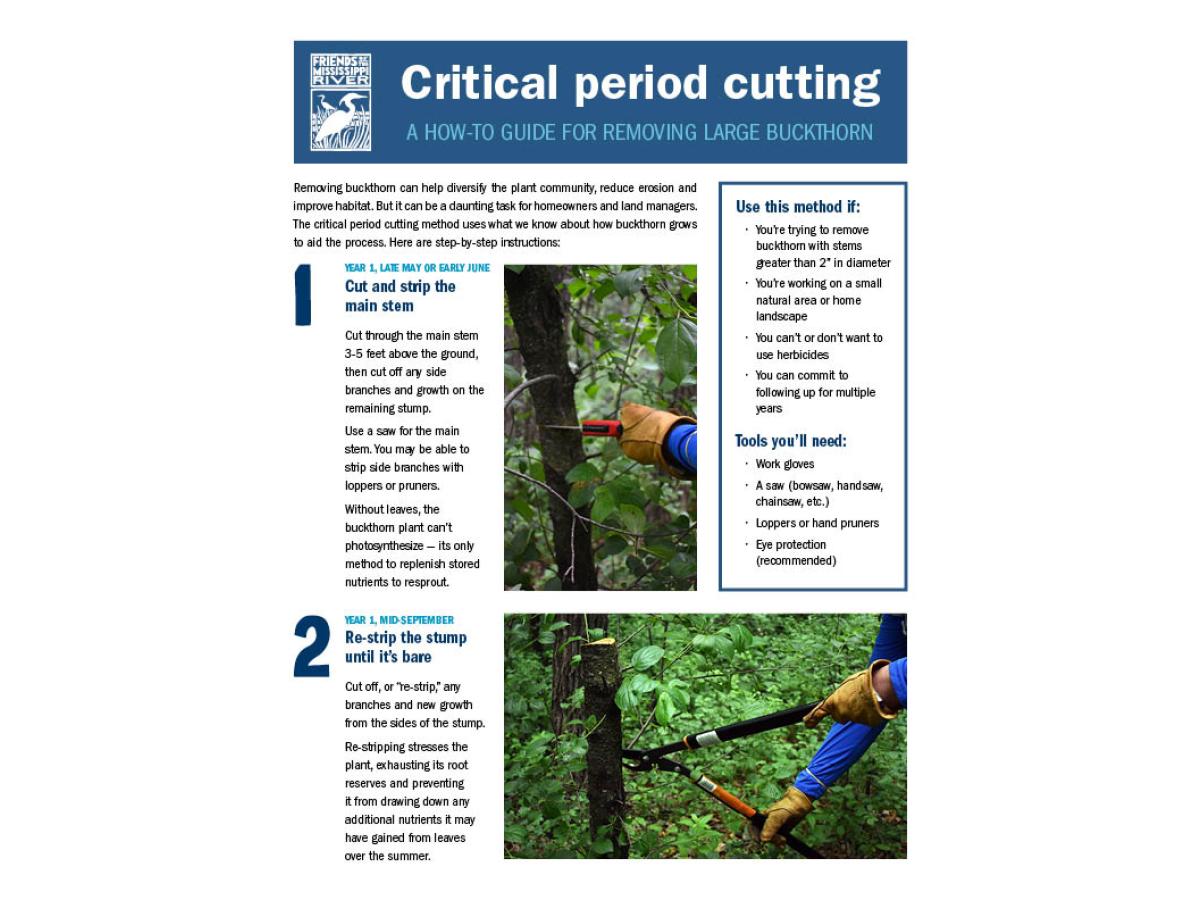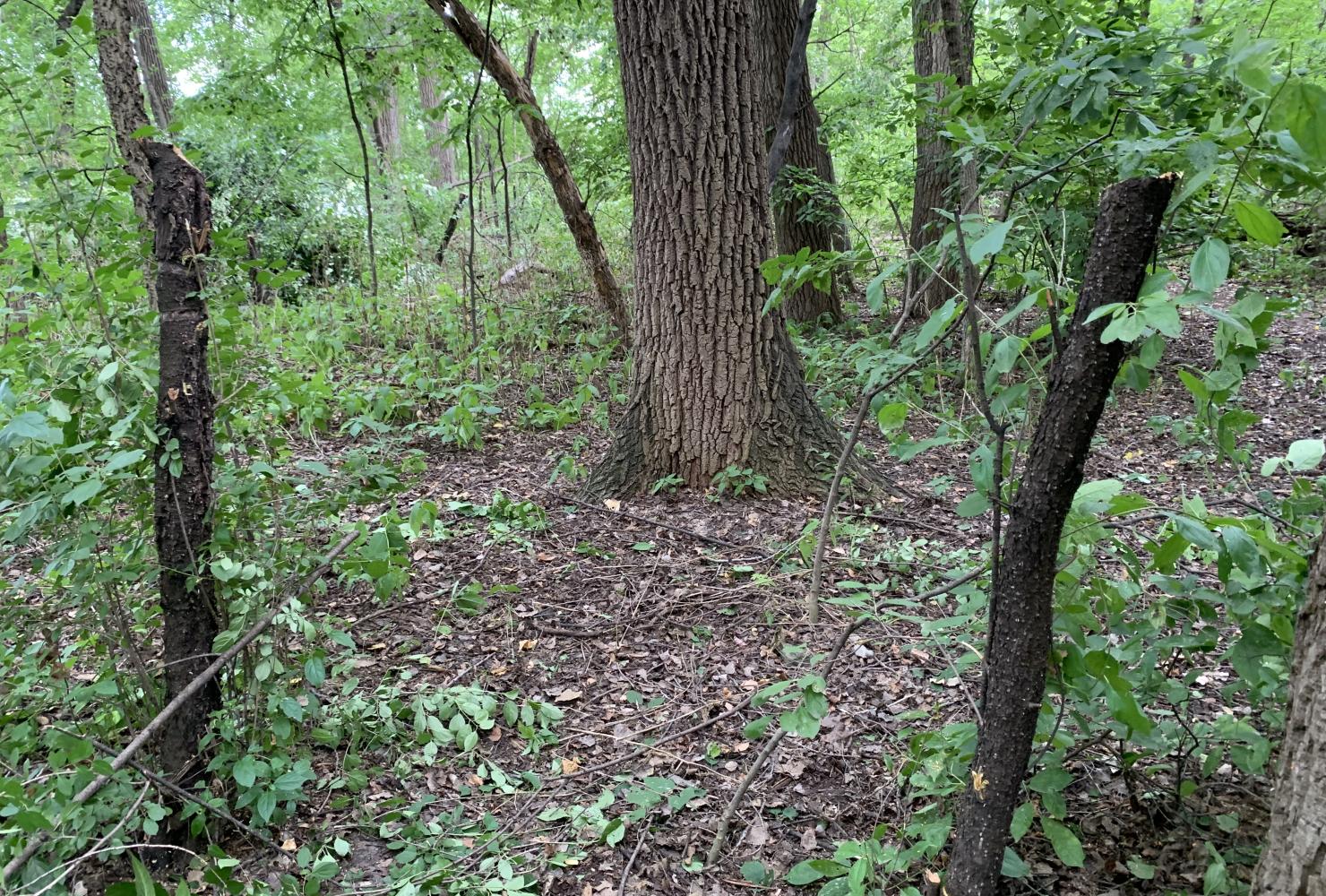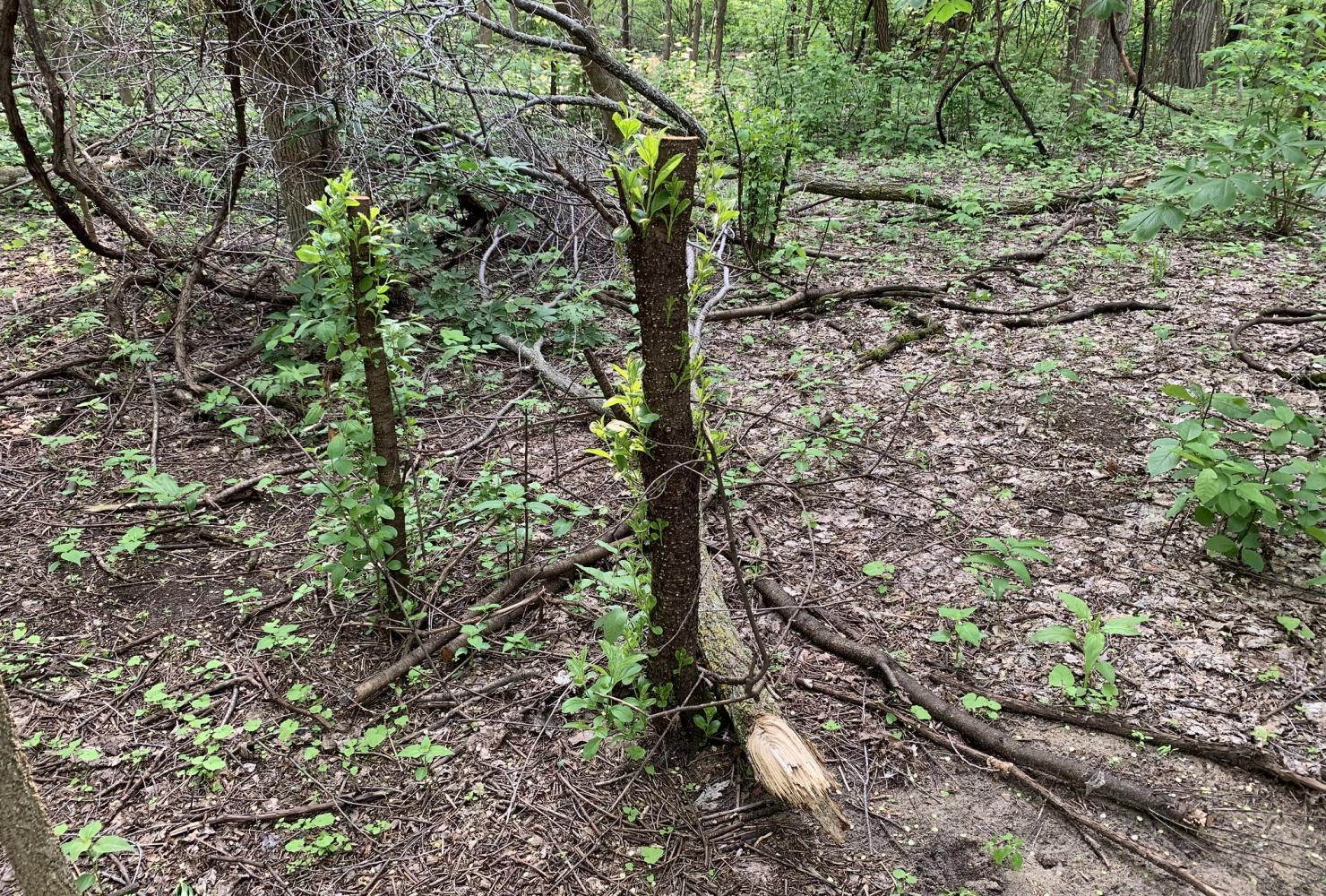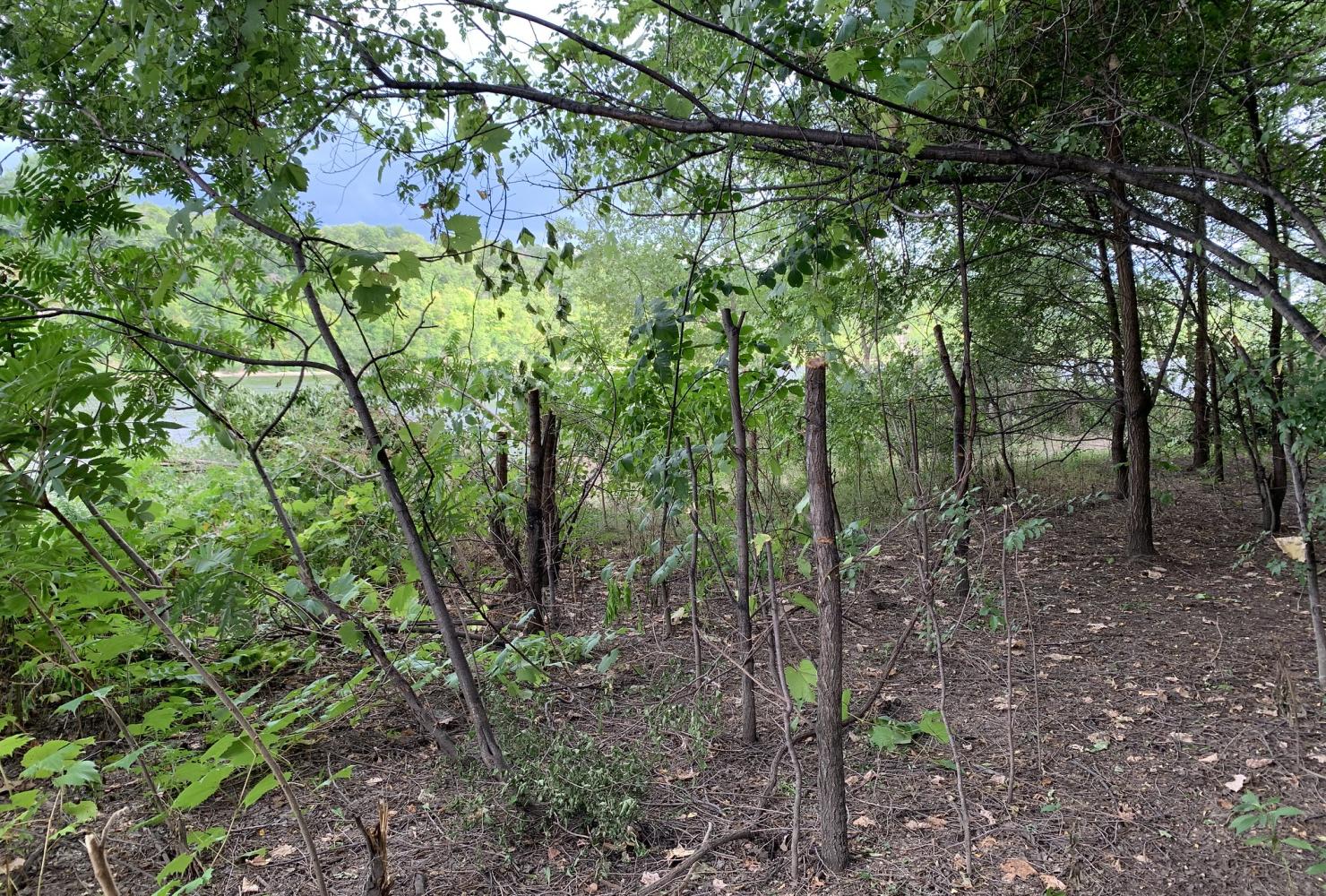A new tool in our toolbox for buckthorn control: Critical period cutting

FMR and volunteers are trialing a new technique to reduce buckthorn at Crosby Farm Regional Park in St. Paul — and it seems to be working.
Minnesota woodlands changed drastically in the 1990s when common buckthorn became the dominant understory shrub in many forests across the state. Its invasive spread and harmful effects on wildlife and waters resulted in it being listed as a noxious weed in 1999. Since then, land managers and restoration professionals have tried many methods to reduce its cover and spread. More recently, some methods, including herbicide use, have been banned or restricted by metro-area municipalities, leaving managers with even fewer ways to remove buckthorn and restore habitat.
At FMR, we're always looking for new tools and strategies for habitat restoration. We recognize that no one tool works for everyone or in every situation, and that the more effective tools we have, the better. Recently, innovative techniques and new research are improving results and reducing herbicide use — some really good news in what often feels like an uphill struggle against buckthorn's spread.
We've been trying a new technique at a few sites in the Twin Cities, and we're excited by the preliminary results.
How we started using critical period cutting
FMR is working to restore the floodplain forest in the Minneapolis Mississippi River Gorge, which means we need to remove a lot of big buckthorn. Our River Gorge Steward volunteers had seen some early success with repeated and well-timed buckthorn cutting by hand. Paired with the focused creation of wildlife habitat piles, these 2019 volunteer efforts were FMR's first foray into critical cutting.
In 2021, we were able to hire a contractor to scale up and refine that approach of buckthorn removal and try "critical period cutting" — an innovative technique that uses what we know about buckthorn growth to eliminate any need for herbicide use.

We're currently using professional contractors in the gorge, but this method can easily be employed by a dedicated group of volunteers with handsaws, loppers, pruners and two years' time.
Removing buckthorn leaves an opening for new native plants. We'll be kick-starting this planting process later in September and October when we host two volunteer events in the gorge to plant about 40 native trees (species like hackberry, American sycamore and northern red oak) where there was once dense buckthorn.
We're grateful for the funding provided by the Minnesota Environment and Natural Resources Trust Fund as recommended by the Legislative-Citizen Commission on Minnesota Resources, or LCCMR, and coordination with the Minneapolis Park and Recreation Board and the Longfellow Community Council on this project.
In other good science news
FMR Land Conservation Director Alex Roth has contributed to research that's giving the restoration community fresh ideas about managing buckthorn and re-establishing a native understory.
We know that seeding and planting can help native species return after initial buckthorn removal and create conditions suitable for prescribed fires. This recent research has shown that planting dense shrubs suppresses the germination of new seedlings by almost 90%, and establishing grasses can reduce buckthorn seedling germination by over 50%! While a potentially challenging undertaking over a large scale, this method could work well for a smaller population of buckthorn or a smaller property.
Even more recent research dispels long-held notions about buckthorn seed bank longevity. Seeds actually only survive for one to two years in the soil, not five to six years as was commonly believed.
Through participation in studies like this, FMR is helping to provide tools and knowledge about the best ways to heal systems affected by buckthorn and other invasive plants.
Join us to create diverse habitat
Buckthorn can increase soil erosion in our waterways and reduce the diversity of plants that make up a habitat. You can help reduce its spread by volunteering at our restoration sites across the Twin Cities. If you're curious about buckthorn removal and native plantings in your yard, check out our guide to small-scale buckthorn removal and landscaping for the river.



